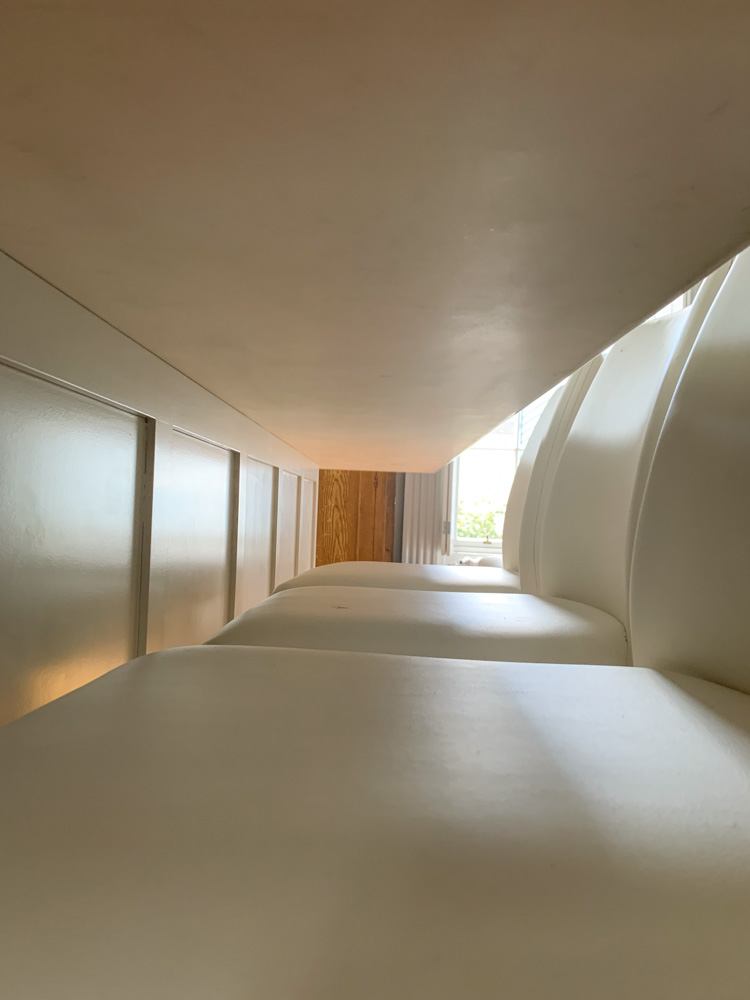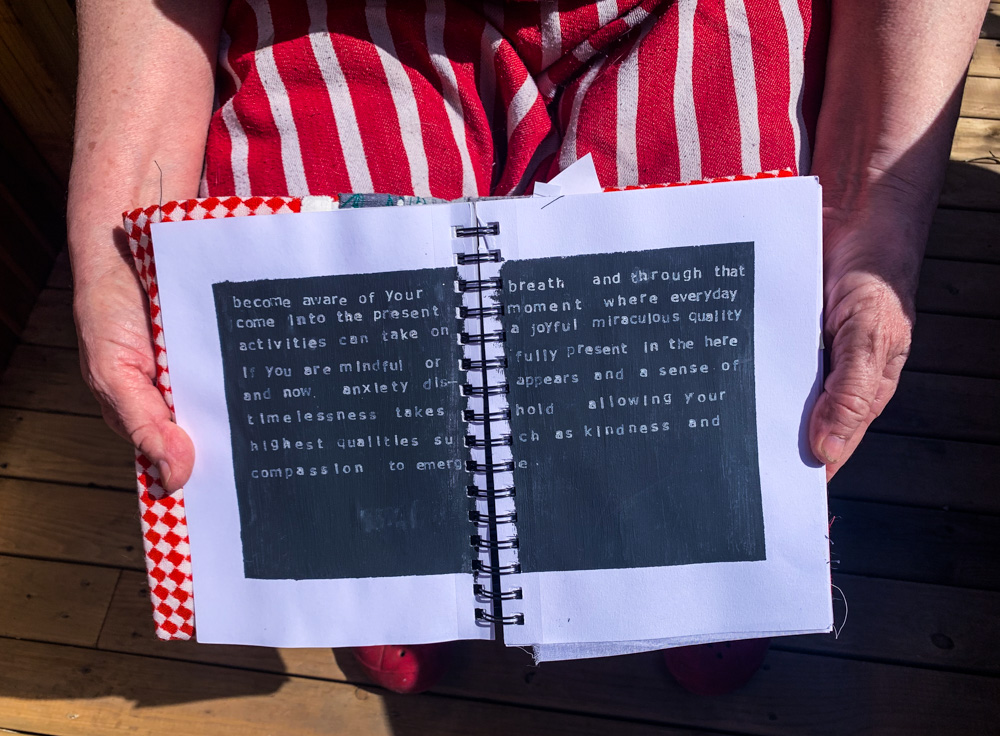
This is my view from the kitchen floor. I’m down here exercising. Since my shoulder injury (and isolation) I’ve had to get creative with fitness. It’s legs only, more or less. Lifts, lunges, plies. Stuff like that. If it’s not down here, it’s in the bathroom while brushing my teeth. Right now, I’ll do anything to balance the calorie in calorie out equation.
As I move, John Prine’s scratchy, folksy voice fills my kitchen. Prine died from complications from Covid-19 on Tuesday. He was 73. Some say Prine was the greatest singer-songwriter of his generation. Bob Dylan said his stuff “is pure Proustian existentialism.” I’d say he’s a portal into whatever we feel like feeling: love, heartache, hardship, raunchiness, joy and everything in between. Basically the arc of emotions we all feel throughout the course of the average day in isolation.
In Spite of Ourselves, a duet between a husband and wife who adore each other ‘despite of themselves,’ comes on.
She thinks all my jokes are corny
Convict movies make her horny
She likes ketchup on her scrambled eggs
Swears like a sailor when she shaves her legs
She takes a lickin’ and keeps on tickin’
I’m never gonna let her go…
In spite of ourselves we’ll end up a-sittin’ on a rainbow
Against all odds, honey we’re the big door-prize
We’re gonna spite our noses right off of our faces
There won’t be nothin’ but big ol’ hearts dancin’ in our eyes
As I squat down, not as low as I could go, I think about this line: she takes a lickin’ and keeps on tickin’. Prine borrowed it from the classic Timex slogan, which since its beginning in the 1950’s has become a metaphor for tenacity and resilience. Coincidentally, just before my kitchen ‘workout’ I listened to Under the Influence, a podcast about life through the lens of marketing. The episode I listened to told the story of products, like the Timex watch, tortured in advertising campaigns to prove their indestructible value. Timex watches were embedded in blocks of ice and shaken in an agitator at 1300 vibrations per minute. They were put in the hands of Acapulco cliff divers, immersed in the Dead Sea, spun in vacuum cleaners and strapped to jackhammers. One even went through a family pet’s digestive tract. But always, they survived.
We’re all feeling like Timex watches these days. But it’s not a physical test we’re enduring, it’s a mental one. We spin, we plunge, we’re crushed and we’re left alone. But it’s yet to be determined how we will survive.
Later I deliver cookies to my aunt Sandra. She has a sunny deck where we both can sit and visit, at a distance, before I walk the two blocks back home again. I ask her what she’s working on in her studio these (long) days. She shows me a page from her current notebook where she had letter-blocked a quote from Vietnamese Buddhist monk Thich Nhat Hanh:
“If you are mindful of the here and now, anxiety disappears and a sense of timelessness takes hold allowing your highest qualities such as kindness and compassion to emerge.”

Last week I made my mom’s molasses brown bread with my ten-year-old son Rex and recorded the process for Suzanne Hancock’s Sunday Night Dinner Podcast. As Rex and I took turns kneading the dough, I thought about how this activity pulls you into the present moment: the shaggy, sticky bits clinging to fingers. The kneading. The textures. The conversations. The absence of a phone, which we know is the portal into worry.
We’re mindful in the here and now.
It’s cruel to suggest an activity to quell anxiety that involves yeast and flour, the two ingredients sold out in stores across most cities. But if you’re stocked up, here’s the recipe. You can jump right in, or listen to the episode here first. We take you into our Halifax kitchen, we chat about Little Women, (well I do) and I share a story about bread disasters past.
This recipe will take a licking and keep on ticking. If it’s undercooked, it makes for great toast. If it’s overcooked, it’s perfect dipped into soup or brown beans. Either way the process will pull you into the moment, where your highest qualities can emerge. In the words of John Prine, you’ll
… end up a-sittin’ on a rainbow
Against all odds, honey we’re the big door-prize
We’re gonna spite our noses right off of our faces
There won’t be nothin’ but big ol’ hearts dancin’ in our eyes
Molasses Brown Bread
Or ‘Fred’s Bread’, via Brian Byrne, via my Mom, Beverley Cameron, with special thanks to my sister Sally for delivering key isolation bread ingredients to my front step – including coveted yeast, which has since sold out throughout the city.
Grease three bread pans with butter and set aside. (My mom lines her loaf pans with parchment paper instead of greasing the pans. Up to you).
2 tablespoons dry yeast
2 cups rolled oats
¼ cup butter
1 1 /2 tablespoons salt
1 cup molasses
3 cups whole wheat flour
5 cups all purpose flour
Begin by filling a small bowl or glass measuring cup with ¾ cup warm water. Sprinkle yeast over the water and set aside to bubble away.
Combine oats, butter and salt in a large mixing bowl (your largest). Fill the kettle and when it boils, pour 2 cups of boiling water over the oat mixture. Stir, add molasses, and stir some more.
Check on the yeast – by this point the water should be cloudy and full of bubbling yeast. If nothing is happening, the water might be too cold, or too hot. If so, begin the water and yeast stage again. If still nothing, buy some new yeast. The bowl of oats etc can wait. But if all is well, give it a quick stir and pour it over the molasses/oat mixture.
Clear and clean a space on your counter. It’s important to do this now, before your hands are covered in bread dough. Add flours to the mixing bowl and slowly stir until roughly combined. Tip the mixture (there will be lots of loose flour at this point) onto the cleaned off counter and combine / corral the dough with your hands. Knead dough for 9 minutes – folding, pushing with the heel of your hand, turning a quarter turn, push, fold, then turn again. After 9 minutes the dough should be smooth and elastic.
Wash out the mixing bowl, dry it, then grease with a little butter. Place the dough in the bowl, flip the dough so now it’s buttery all over. Cover with a tea towel and leave to rise in a warm place for about an hour. A warm place could be a sunny window sill, or if your oven has a proofing setting, put the bowl in there, without the tea towel on top. An hour later, punch dough down. Then, divide dough into three equal portions. Using a rolling pin, flatten each portion, roll out the air bubbles and shape into a rectangle. Roll up each rectangle, from the top toward you, and tuck the ends under. Place the dough in the prepared loaf pans.
Leave pans for another hour, again in a warm spot. Now is the time to preheat your oven to 350F. After an hour, carefully put pans into the preheated oven and bake for 45 minutes, or so. My mom says she knows the bread is ready when there is a ‘strong smell of bread’ in the house. The tops will be a deep golden. Tip the loaves, right away, onto a rack to cool. Slather the tops with butter, if you’d like.
